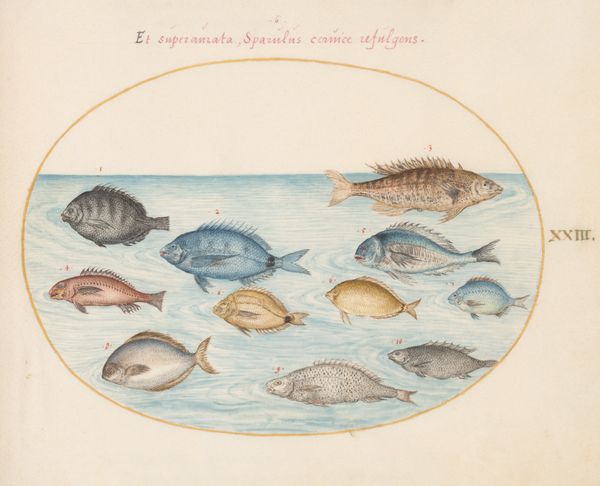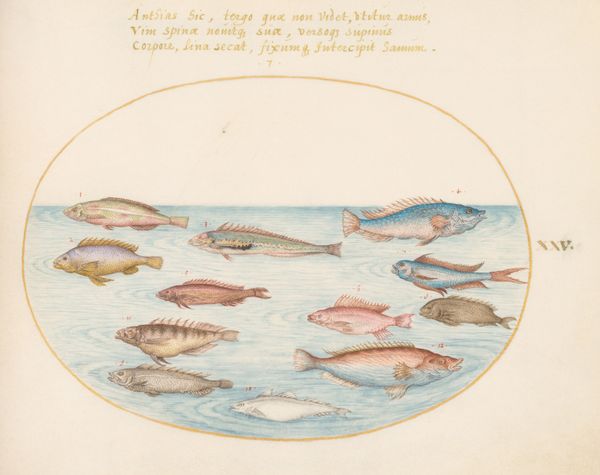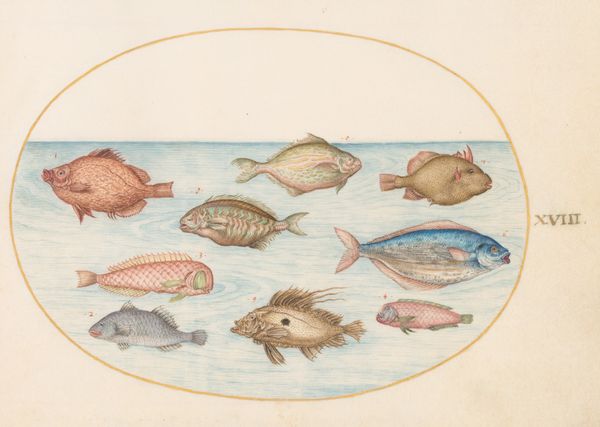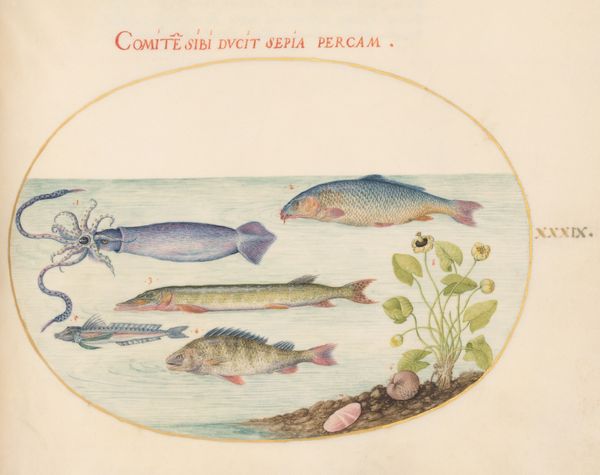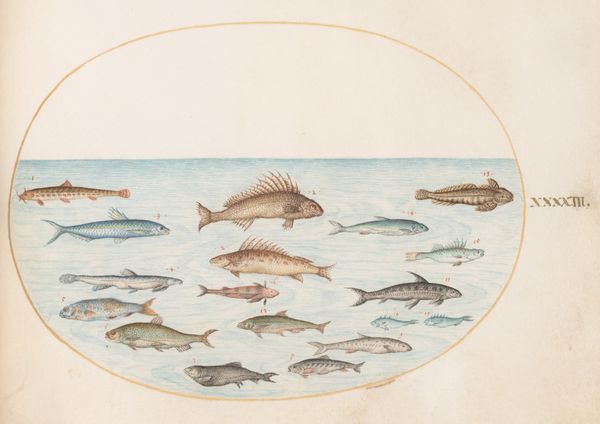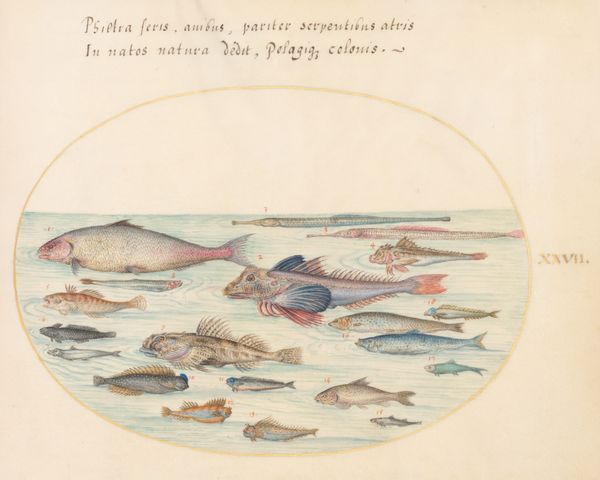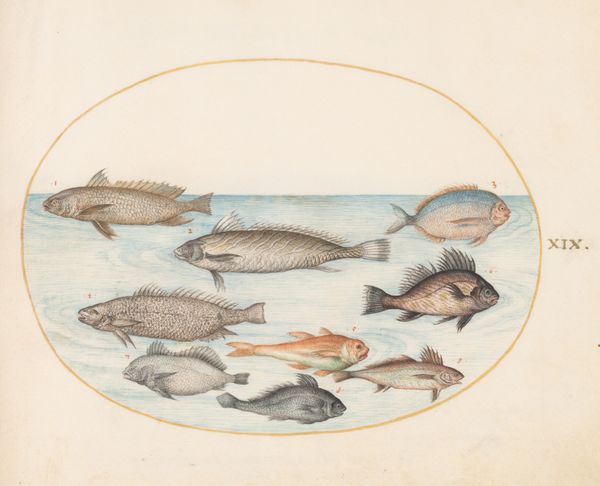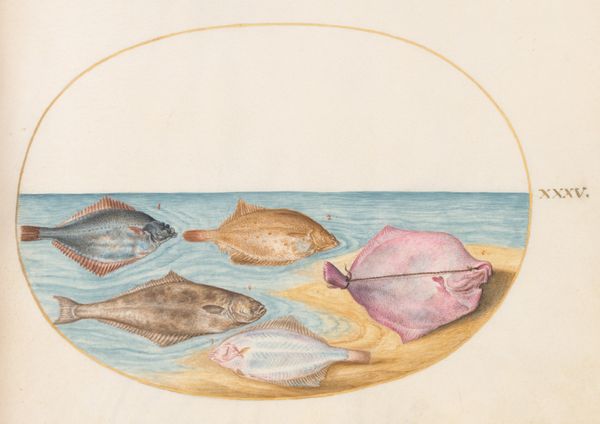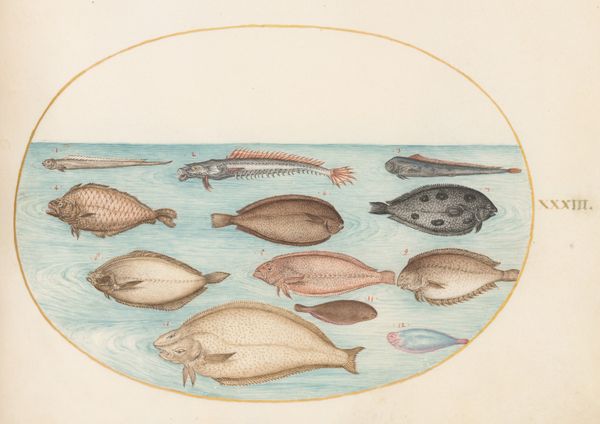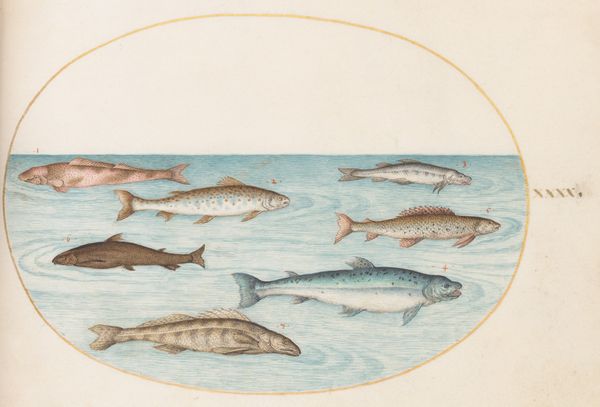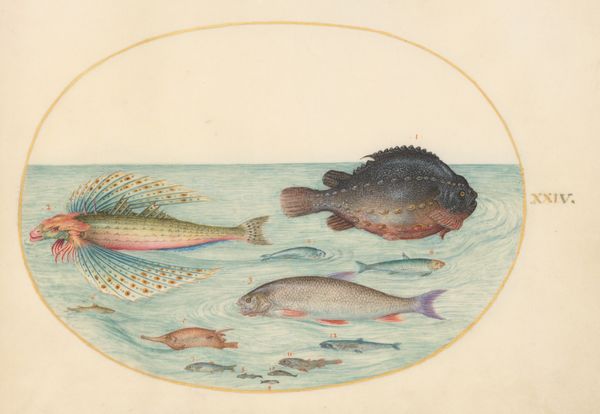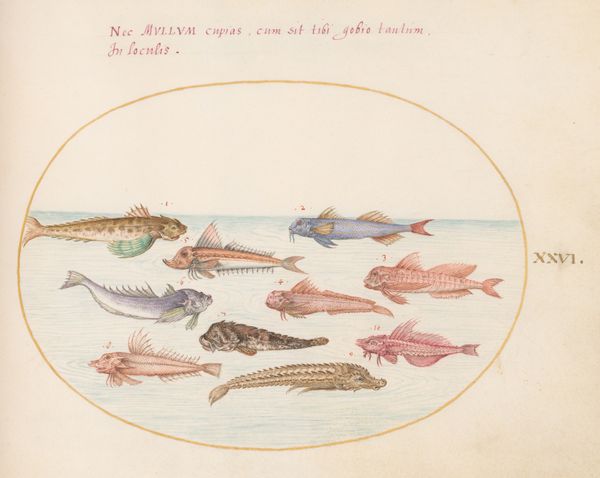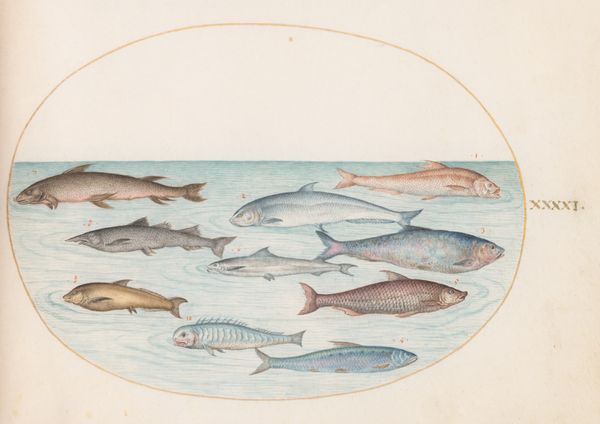
drawing, coloured-pencil, tempera, watercolor
#
drawing
#
coloured-pencil
#
water colours
#
tempera
#
mannerism
#
11_renaissance
#
watercolor
#
coloured pencil
#
academic-art
#
miniature
Dimensions: page size (approximate): 14.3 x 18.4 cm (5 5/8 x 7 1/4 in.)
Copyright: National Gallery of Art: CC0 1.0
Curator: Let's examine this work, Plate 28: Sea Bream(?) and Other Fish, made around 1575-1580 by Joris Hoefnagel. It appears to be executed with colored pencil, tempera, and watercolor. What strikes you first about it? Editor: The jewel-like quality! They are all presented almost like precious objects. I am wondering how that exquisite colouration and detail would’ve been achieved by him, with those materials. Curator: Absolutely. This miniature, brimming with meticulously rendered fish, embodies the Mannerist style popular at the time. These detailed studies served a purpose beyond mere aesthetics; they fed the era's burgeoning scientific curiosity and nascent encyclopedic ambitions. Editor: Right, the means of production tells us a lot. Colored pencil, tempera and watercolour… this speaks of delicate craftsmanship. Was this destined for an exclusive clientele who would have the capacity and leisure for natural science, maybe as a kind of study aid? Curator: Precisely. Such meticulously detailed natural studies were often commissioned by wealthy patrons eager to document the world around them. Hoefnagel himself straddled the line between artist and naturalist. And, as the inscription "Magis Mvtvs Qvam Piscis" suggests ("More mute than a fish"), could it also be that fish represents silent resistance against tyranny? Consider that it comes from an era rife with political and religious tension in Europe. Editor: Intriguing. So, on the one hand, there's the labour involved, clearly for wealthy consumption. But I also like how you're highlighting its potential use as political allegory, its potential for something resistant. Even through something so contained. It prompts the question about the freedom available in artmaking. How else would it manifest if at all, do you think? Curator: Well, its placement within scientific illustration already bends genre conventions. Hoefnagel takes observational realism and pushes it toward idealized forms. This reveals not just skill, but a critical assessment of prevailing natural philosophy. Editor: A push toward the ideal within strict boundaries, so in the art making, that seems like an assertion of the self? I feel compelled to ask questions of craft processes when works are positioned within elite frameworks; what labor did it involve, how long, and how available were materials like this. It recontextualizes our view of the image, in that production moment. Curator: Examining Hoefnagel’s work this way deepens our understanding. It exists at a confluence of politics, craft, scientific inquiry, and artistic innovation. Editor: For me, that deeper dive makes me appreciate how the materials of its making speak, in and beyond a frame.
Comments
No comments
Be the first to comment and join the conversation on the ultimate creative platform.
